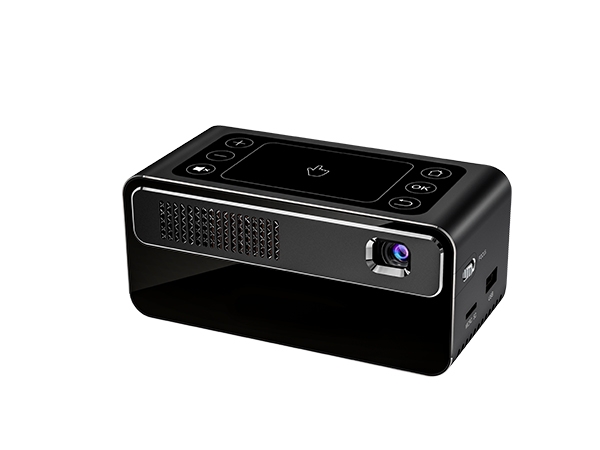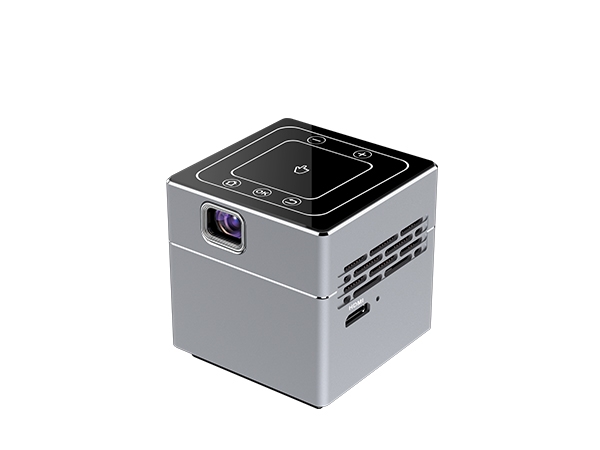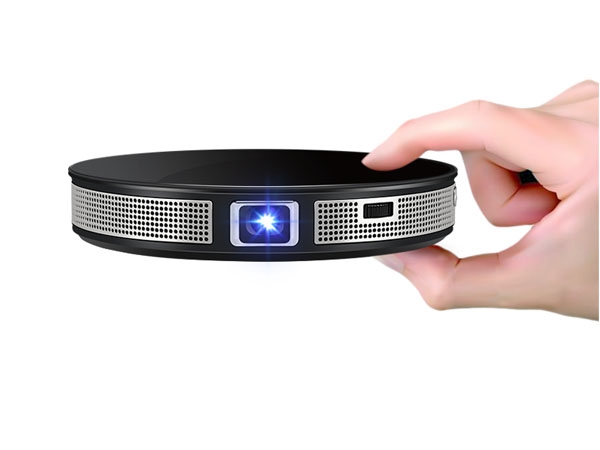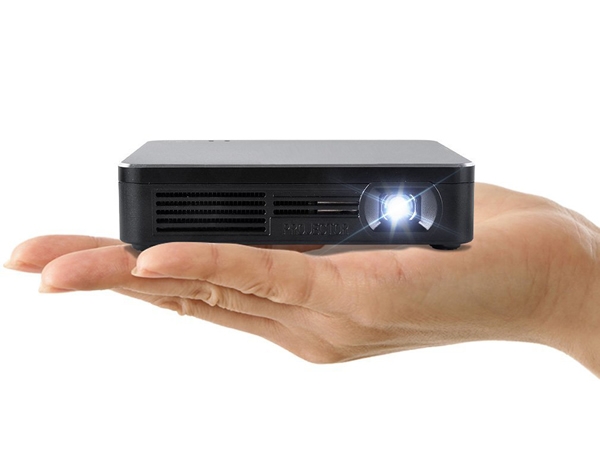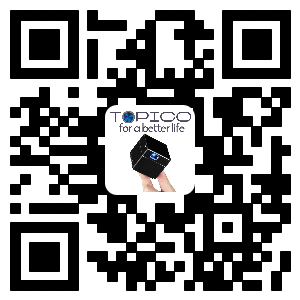CES 2018: An array of mind-boggling technology
Improving how we live
If a theme can be picked out of CES 2018, it is that tech companies have tried to make tech more usable. For Sony, that meant reviving their Aibo robotic dog, one of the company’s most memorable experiments from the ‘90s and early ‘00s. The Aibo ERS-1000 now features 22 touch-sensitive panels which allow it to react sinuously to belly rubs, multiple cameras that help it to recognize different family members, and moves with a fluidity that had even the most hardened journalists breaking down into baby voices. Sony claim it will build relationships as well, using AI to learn patterns in voice and movement – although, it was only the second cutest robot at CES, which I will explain later.
If you like your drones creepier, Honda debuted a concept for a robotic ATV workhorse with four-wheel drive. It includes a myriad of potential attachments, from satellite dishes to fertiliser dispensers, while its small size removes potential restrictions to big companies, too. Honda are hopeful about the versatility of these devices, and envisions them being used on construction sites, farms, or in gathering scientific research in the field. Sensor technology advances of the last couple of years have also allowed the small ATV to combine GPS information with a variety of terrain adaption controls.
3D printing also made a return with the Artec 3D Leo. For the meagre price of two year’s tuition fees, you can buy a 3D scanner that will create a digital model of your surroundings as you watch. The handheld device can capture 80 frames over a single second and builds 3D structures without the aid of external hardware. Looking ahead, the Artec certainly shows promise for being extremely useful in computers or even phones of the future, once developers make it smaller and cheaper. In the meantime, the product justifies its huge price. The gargantuan lens means even complicated objects are processed with extreme detail, paving the way for advancements in fields from monument preservation to orthopaedics.
Thinner, Wider?
Phones have almost reached the tipping point in thinness, whereby becoming any slimmer would hinder their practicality. Acer’s new Swift 7 Laptop sought to prove that notebooks can still do better. It packs a core i7 CPU and 512GB of solid state storage plus 8GB of RAM despite being just 8.98mm thick, yet the keys have a satisfying click. Instead of fans, the laptop uses copper plating to dissipate heat throughout the keyboard itself, solving a problem manufacturers have had for years. Of all the device’s innovations, the claimed 10-hour battery life is the most impressive. The Swift 7’s practicality will become clearer once tech journalists get their hands on review models later this year.

Image: Flickr
Slidenjoy are making laptop innovations in a rather different way: by developing a thin, 1.2-1.9kg attachment for laptops, which allows the user to slide two further screens out from behind their main display. The screens can be plugged into a machine with just one USB cable, turning photo or video editors into productivity gods on their daily commute. That is, providing those editors are willing to fork out around £320 for the basic edition.
ZTE is another company pinning their hopes on a new two-screen world order. Their Axon M smartphone rocks two 5.2 inch screens that can operate independently or as one big display: viewing pictures looks incredible, and the ability to browse the web on one whilst watching video seems really intuitive. It solves the need for more screen space, but avoids the cumbersome ‘mini-tablet’ approach taken by Samsung with their ‘Note’ line. The phone can even play two videos independently when propped up in a ‘tent’ configuration: a genuinely useful feature that will probably keep the kids happy.
Changing the way we watch
Hypervsn captured guests’ attention for its hologram design. The system essentially uses a wall of LEDs attached to fast-moving propellers, tricking the viewer’s eye by exaggerating the motion and depth of the images, making virtual objects look like they are floating in mid-air. The idea might be completely superficial, yet is impressively cool, and Hypervsn imagines selling the system to sports stadiums and the retail sector.
Meanwhile Samsung set out to solve relatable problems. If you’re a South Korean electronics behemoth, that relatable problem is ‘what if we could build a screen powerful enough to run seamlessly across an entire wall?’ They believe they may have solved that issue with their 146-inch ‘Wall’ TV uses new Micro LED technology, featuring better colour reproduction, especially with black levels, than almost anything else on the market currently. The most exciting part of their concept, though, is that the TV is made up of many small modular panels. Samsung envisions a future where consumers pick the specific number of desired modules, and build anything from a 32-inch kitchen television, to the highly impressive 4K display they were showing in Las Vegas.

Image: Flickr
Not to be outdone on the unaffordable displays market, Sony launched their new £21,000 short-throw projector. The device uses a gorgeous minimalist design, and sits just 24cm from the wall. It incorporates 5 speakers, along with a giant subwoofer on the bottom. The vertical supports for the main body are glass speakers too, and supposedly radiate sound around 360°. The 4k image itself is created using a single laser and scales up to 120 inches. The Japanese company has even included a shelf to put a Playstation on. Obviously, the price point for such a product is completely insane, but Sony say they are aiming more for the ‘expensive table’ sector than just making an overpriced classroom accessory.
Making travel easier?
Car innovation at CES 2018 was defined by not so much by the vehicles themselves, but by the technology inside, with companies making a real effort to design gorgeous futuristic interiors. At least four manufacturers have now partnered with Amazon’s Alexa to provide smart voice control and increase cloud computational functionality, which might one day mean you can set your kettle to boil on the way back from the office. Meanwhile, the Nissan IMx concept defied industry trends by creating a car that was more bulky than the sleek, two-seat designs we are used to seeing in concept cars. Cameras around the car are able to send live information to the driver, via wraparound screens on the dashboard, which Nissan claims creates a safer experience. Speakers in the seat provide total sound isolation, allowing each passenger to listen to their choice of music simultaneously, while alarms play through the driver’s surround-sound headrest to isolate potential hazards, such as vehicles in a blind spot.

Image: Wikimedia Commons
Ford and Toyota’s concepts both involve them syncing everything in cities to the cloud. Ford intend for cars to digitally communicate with traffic lights and other vehicles to improve safety and congestion, and are developing an open source system to achieve this. Toyota’s future involves autonomous vehicles which perform hundreds of on-demand services, from bringing Italian restaurants directly to your door, to creating pop-up shops on-demand.
Medical tech with a use?
The last two years have seen an explosion of smartwatches claiming to be able to do everything from measuring heart rate to preventing mood swings. Omron’s Blood Pressure Monitor smartwatch might be one of most useful medical innovations at CES, combining the utility of a massive blood pressure cuff with the discrete convenience of a watch. The flexible cuff inflates inside the main watch band to take medically accurate readings of blood pressure and heart rate, and can be synced with an app to notify doctors of an emergency. On top of all this, it receives messages and calls too – oh, and it even tells the time.
The next medical innovation comes from… L’Oréal! They have built a tiny battery-free UV sensor that is designed to sit on a watch, a pair of glasses, or a fingernail. It tracks time in the sun, as well as light intensity. It pairs with a companion app to track light intensity as well as cumulative time in the sun. A spokesperson has reported that the product will cost less than £35 when it launches in the summer (making it the only product on this list I have any chance of buying).
The Aflac Duck was my favourite robot from CES: think fluffy toy duck, but smarter. It is designed to act as a comforter and communicator for children undergoing cancer treatment. Like Sony’s Aibo robot dog, it has sensors all over its adorable fluffy body. Children can tap ‘emoji’ disks to the duck’s chest to convey how they are feeling that day, to which the duck will react with contented quacking or a sad honk. The chest light is also magnetic and can be attached to small chemotherapy apparatus copies, to normalise and explain the process. The head simulates a heartbeat when the duck goes into standby mode, helping children to relax when sleeping. The product is not commercially available right now, but Aflac want to take the product into American hospitals. Although it lacked the mind-boggling technology or hefty price tag of many of CES’ inventions, it was my favourite product of the show.

Image: Flickr
Since CES constantly seems to focus on what the world could be, it was refreshing to read about a design that has already improved the lives of real people. CES presentations always feel a bit surreal: Intel, for example, even hired trampoline artists to display its new image processing. It goes without saying that this year, as ever, the show was filled with incredible, mind-blowing moments. With that said, sometimes it’s comforting to know that CES can also make space for a fluffy white duck that keeps sick children company.



